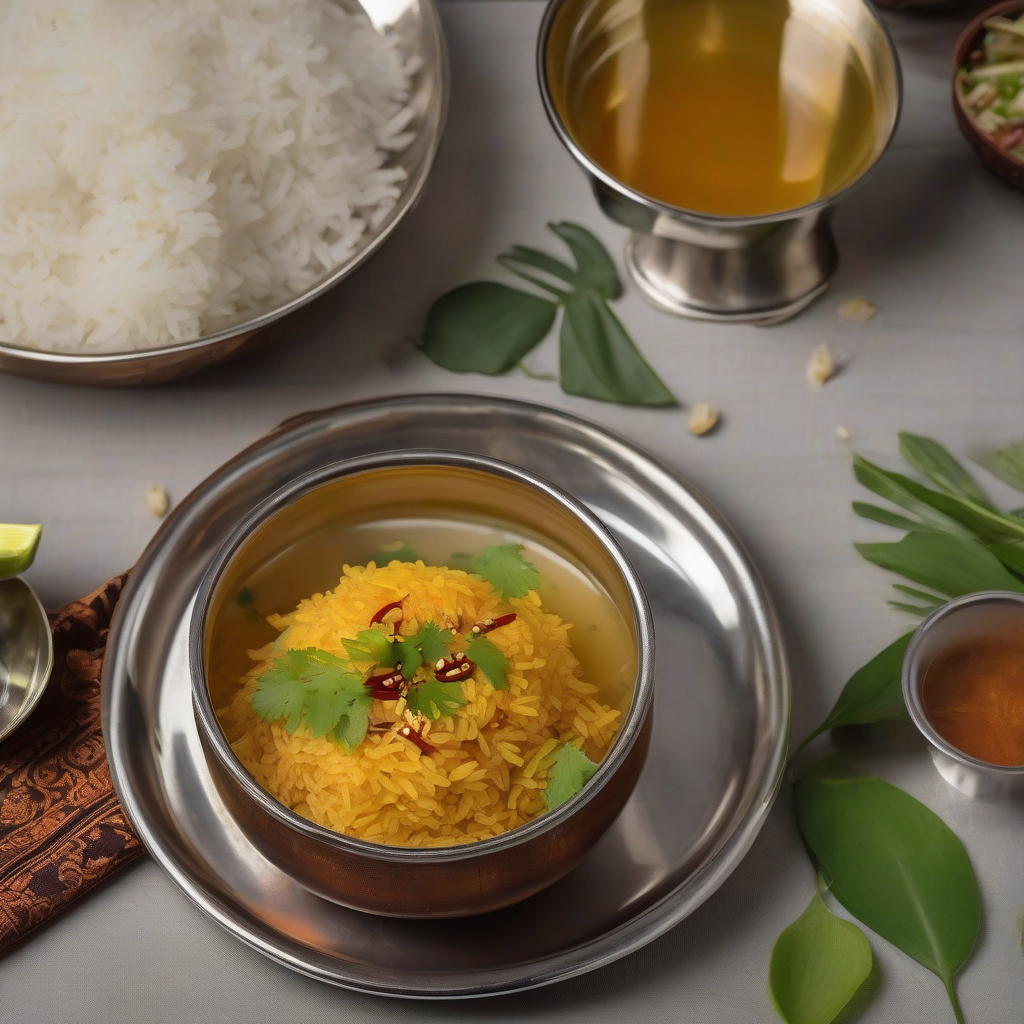Apong Diaries: Let’s Brew Some Magic, Bhaiyon aur Behno!
Namaste, Mitron! Aadaab! Sat Sri Akal! Chef Curry Do’pyaza here, back in your kitchens and hearts, ready to stir up some deliciousness!
Today, we’re not cooking, we’re brewing! We’re diving headfirst into the world of Apong, a traditional rice beer from the beautiful Northeast of India. Think of it as a flavorful hug in a mug, a taste of ancient traditions, and a whole lot of fun!
Apong: The Drink of Celebrations
Apong isn’t just a drink; it’s a part of life in many tribes of Arunachal Pradesh and Assam. You’ll find it flowing freely during festivals like Mopin and Solung, where the aroma of brewing rice fills the air. It’s shared during weddings, births, and other important ceremonies. Apong is a symbol of community, togetherness, and good times! It is a drink that brings everyone together.
A Sip of History
Apong has a history as rich and deep as its flavor. Passed down through generations, the recipe and brewing techniques are closely guarded secrets within families. It’s an ancient art form, a testament to the ingenuity of our ancestors who turned humble rice into a delightful beverage. The tribes of the North East have been enjoying this drink for centuries.
Let’s Get Brewing!
Okay, enough history! Let’s get our hands dirty (figuratively, of course!) and brew some Apong. Remember, this is a simplified version for home brewing. The traditional method is quite involved, but this will give you a fantastic taste of the real deal.
Preparation Time: 30 minutes (plus soaking time)
Brewing Time: 7-10 days (yes, patience is key!)
Ingredients:
- Bora Saul (Sticky Rice): 2 kg (This is the special rice that gives Apong its unique texture and flavor)
- E’pak/Ragi (Starter Cake): 2-3 cakes (These cakes contain the magic microorganisms that ferment the rice. You can find them in specialty stores or online.)
- Water: As needed (Clean, filtered water is best)
Instructions:
- Soak the Rice: Wash the Bora Saul thoroughly and soak it in plenty of water for at least 4-6 hours, or even overnight. This softens the rice and makes it easier to cook.
- Cook the Rice: Drain the soaked rice and cook it until it’s soft and mushy. You can use a large pot on the gas stove or an induction cooktop. Keep stirring it so it does not stick to the bottom. It should be very soft, almost like porridge.
- Cool it Down: Spread the cooked rice on a clean, flat surface to cool completely. Make sure there are no flies hovering around! The rice needs to be at room temperature before you add the starter cake.
- Crumble the Magic: While the rice is cooling, crumble the E’pak/Ragi cakes into a fine powder.
- Mix it Up: Once the rice is cool, sprinkle the crumbled E’pak/Ragi evenly over the rice. Mix it really well, ensuring that every grain of rice is coated with the starter.
- The Fermentation Chamber: Transfer the mixture to a clean, airtight container (a large ceramic jar or a food-grade plastic bucket works well). Press the mixture down firmly to remove any air pockets.
- Seal and Wait: Cover the container tightly and store it in a cool, dark place for 7-10 days. This is where the magic happens! The microorganisms in the E’pak/Ragi will ferment the rice, creating the characteristic Apong flavor.
- Check and Strain: After 7-10 days, open the container. You’ll notice a layer of liquid on top. This is your Apong! Strain the mixture through a clean cloth or a fine-mesh sieve to separate the liquid from the solids.
- Enjoy!: Your homemade Apong is ready! Serve it chilled or at room temperature.
Chef Curry’s Tips for Apong Perfection:
- Hygiene is Key: Make sure all your utensils and containers are scrupulously clean to prevent unwanted bacteria from spoiling your Apong.
- Temperature Matters: Keep the fermentation container in a cool, dark place. High temperatures can kill the microorganisms and ruin the fermentation process.
- Taste Test: After 7 days, taste a small sample of the Apong. If it’s not strong enough, let it ferment for a few more days.
- Starter Cake Quality: The quality of the E’pak/Ragi is crucial. Buy it from a reputable source to ensure it contains the right microorganisms.
Cooking Medium Variations:
- Gas Stove/Induction Cooktop: Best for cooking the rice. Use a large, heavy-bottomed pot to prevent sticking.
- Pressure Cooker: You can cook the rice in a pressure cooker, but be careful not to overcook it. You want it soft and mushy, but not burnt.
- Slow Cooker/Crockpot: Not recommended for this recipe.
Nutritional Information (Approximate, per serving):
Since Apong is a fermented beverage, the nutritional content can vary depending on the ingredients and fermentation process. However, it generally contains:
- Calories: Moderate
- Carbohydrates: Primarily from the rice
- Alcohol: Low to moderate (depending on the fermentation time)
- Probiotics: Contains beneficial bacteria from the fermentation process
Serving Suggestions:
- Serve Apong chilled or at room temperature in traditional bamboo cups or glasses.
- Pair it with spicy Northeast Indian dishes like pork with bamboo shoots or fish cooked in banana leaves.
- Share it with friends and family during celebrations and gatherings.
Time to Brew!
So there you have it, folks! My simplified version of Apong. It’s a labor of love, a journey of patience, and a delicious way to connect with the rich culinary traditions of Northeast India.
Go on, give it a try! Brew some magic in your own kitchens. And don’t forget to share your Apong (and the recipe!) with your friends and family. Let’s spread the love, one delicious sip at a time!
Until next time, happy brewing and happy eating!
Yours in deliciousness,
Chef Curry Do’pyaza!
